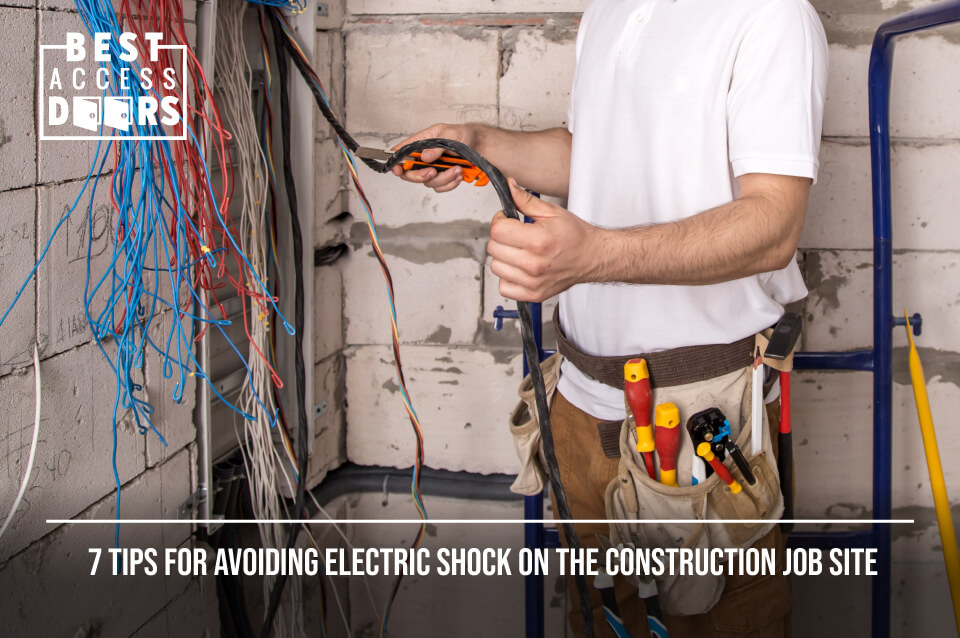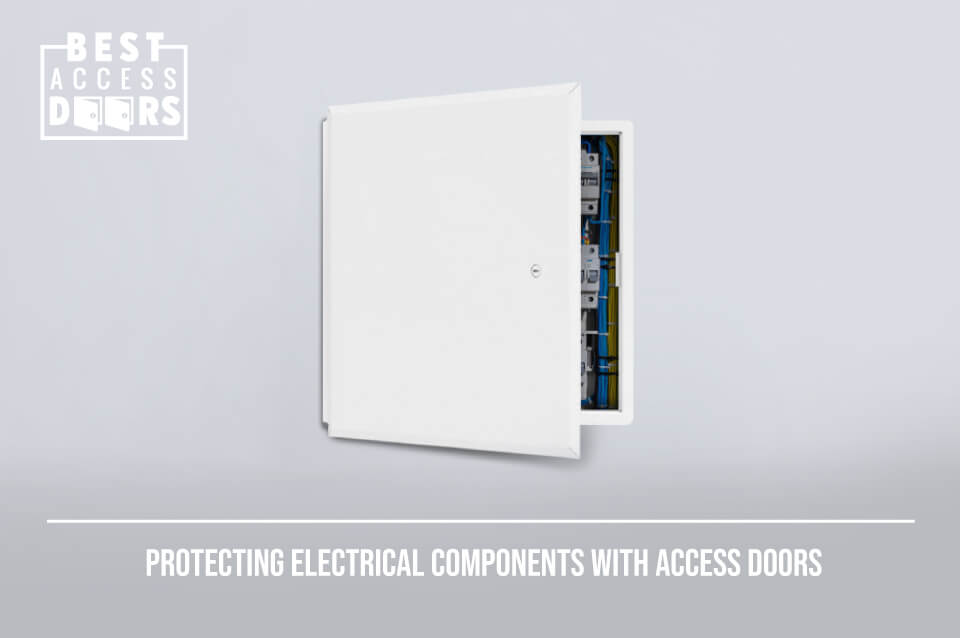7 Tips for Avoiding Electric Shock on the Construction Job Site
Posted by Best Access Doors on 23rd Aug 2023
Working on a construction site involves inherent risks, particularly regarding electrical work. Electric shock injuries can have severe consequences, ranging from minor discomfort to life-altering injuries or even death. Construction site supervisors must prioritize safety and proactively prevent electric shock incidents among their workers. One effective strategy is to use the right access doors to protect electrical components and prevent electric shock. In this article, we will provide top tips for avoiding electric shock on the construction job site, focusing on the importance of using appropriate access doors.
Understanding Electric Shock
First and foremost, it is essential to distinguish between electric shock and electrocution. Electric shock occurs when a person is injured by an electrical current, causing injuries. Electrocution is fatal when the victim dies from electrical overload.
Causes of Electric Shock on the Construction Job Site
Electric shock can result from various causes on the construction job site. Some of the primary causes of electric shock include:
- Powerline or electrical arc flash contact
- Accidental contact with exposed electrical sources
- Faulty electrical installations, wiring, and repairs
- Contact with metal, vegetation, or other materials exposed to electrical currents
- Unintentional contact with fallen power lines or the ground near them
- Issues with swimming pool pumps, faulty pool lights, or inadequate safety devices
- Shocks from unprotected or defective electrical products
- Incorrect use of plug adapters or grounded plugs
- Lightning strikes during thunderstorms
- Construction machinery contacting power lines
Electric Shock Symptoms and Injuries
Recognizing the symptoms and potential injuries resulting from electric shock is vital on the construction job site. The most common signs and injuries include:
- Heart muscle damage, cardiac arrest, arrhythmia, or fibrillation
- Brain injuries, seizures, memory loss, or confusion
- Loss of kidney function, contact point deformities
- Respiratory failure, numbness or tingling, paralysis
- External and internal severe burns, vision, speech, and hearing problems
- Nerve damage, hearing loss, muscle, tendon, and disc injuries from involuntary contractions
- Damage to the spine, back, and neck
- Cataracts, secondary injuries from falls after the shock
- Loss of consciousness, muscle pain, compartment syndrome
It is important to note that victims may also experience muscle pain and headaches after an electric shock, indicating underlying injuries or neurological damage which require a trip to the hospital.
7 Safety Tips for Avoiding Electric Shock on the Construction Job Site
To keep workers safe on the job site and minimize the risk of electric shock incidents, construction site supervisors should implement the following tips:
Tip #1: Conduct thorough risk assessments: Identify potential electrical hazards specific to the construction site and develop mitigation strategies. Consider the use of appropriate access doors to protect electrical components.
Tip #2: Provide comprehensive training: Educate workers on electrical safety practices, emphasizing the causes of electric shock on the construction site and how to avoid them. Highlight the importance of using suitable access doors for protection.
Tip #3: Promote awareness: Regularly remind workers about the risks associated with electric shock and the importance of adhering to safety protocols on the construction job site. Encourage open communication and the reporting of potential electrical hazards.
Tip #4: Inspect and maintain equipment: Regularly inspect electrical equipment, wiring, and connections specific to the construction site to ensure they are in good working condition. Promptly address any identified issues or faults.
Tip #5: Use proper personal protective equipment (PPE): Ensure workers can access and use appropriate PPE, such as insulated gloves, safety goggles, and non-conductive footwear, specific to the construction job site.
Tip #6: Implement lockout/tagout procedures: Establish and enforce proper lockout/tagout procedures on the construction job site to isolate electrical equipment during maintenance or repair work, preventing accidental activation and protecting workers from electric shock.
Tip #7: Install and maintain suitable access doors: Select access doors that provide adequate protection for electrical components and wiring specific to the construction job site. Follow installation instructions and regularly inspect for any signs of damage or wear.
Following these seven tips on the construction site reduces risks to your workers. Remember, prioritizing safety and using appropriate access doors tailored to the construction environment is essential for creating a secure work environment for construction workers.
Protecting Electrical Components with Access Doors
One effective method of avoiding electrical shocks and injuries on the construction job site is by keeping electrical wirings protected with access doors explicitly built for different electrical systems. Access doors provide a barrier that shields electrical components, preventing accidental contact and reducing the risk of electric shock incidents. By installing access doors tailored to the construction job site, construction site supervisors can enhance safety measures and ensure the well-being of construction workers.
Best Access Doors provides high-quality access doors that meet safety standards and protect against electrical hazards by storing electrical wires out of reach. Explore our range of access doors and choose the right ones for your construction site. Prioritize safety and prevent electric shock incidents on the construction job site by installing access doors today.
Share our story - the 2025 version is available


